WHAT ARE THE STEELS?
Tool and die steels are covered in BS 4659:1989, although both American nomenclature and a variety of
trade names are also in use. Available in high-quality grades, these specifically-designed steels can be grouped
broadly according to their intended application: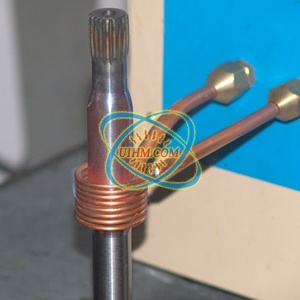
. High-speed steels (BM and BT series in BS 4659) for drilling/cutting, with an ability to retain hot hardness.
. Cold-work steels (BA, BD and BO series) for stamping, blanking, pressing and forming.
. Hot-work steels (BH series) for hot forming and precision die casting.
. Plastic-moulding steels (BP series) for plastic-moulding and highly-polished dies, where toughness is required.
. Shock-resistant steels (BS series) for chisels, punches and tools subject to impact loading.
. Hammer die steels for cold forging, hammering and stamping.
All tool and die steels must be heat treated to develop optimum properties in terms of hardness, strength, toughness and wear resistance. Almost all are hardened and tempered. Hardening involves controlled heating to a critical temperature dictated by the type of steel (in the range 760- 1300°C) followed by controlled cooling. Dependent on the type of material, appropriate cooling rates vary from very fast (water quench) to very slow (air cool). Tempering involves reheating the hardened tool/die to a temperature between 150-675°C, depending on the steel type. A process which controls final properties whilst relieving stresses after hardening, tempering can be complex; some steels must be subjected to multiple tempering operations. In some cases, a sub-zero treatment can be incorporated into the hardening and tempering cycle in order to develop maximum hardness and optimise dimensional and metallurgical stability.
WHAT ARE THE PROCESSING OPTIONS?
Most tools and dies must be protected from oxidation and decarburisation during treatment. The heat treater uses
four basic types of furnace with various processing media to meet this requirement:
. Salt baths – the traditional route capable of treating the complete range of tool steels with tight control.
. Fluidised beds – a more recent development capable of treating a wide range of tool steels other than those requiring high hardening temperatures.
. Sealed-quench furnaces – applications restricted by lower hardening temperatures and the choice of oil quenching or “still” gas cooling.
. Vacuum furnaces – the cleanest route, mainly employing gas quenching; the recent introduction of high-pressure
gas quenching has widened the range of steels which can be successfully treated.
The table lists the capabilities of these furnaces in relation to some commonly-used BS 4659 steels.
WHAT ARE THE LIMITATIONS?
Hardenability The measure of a steel’s ability to harden in depth, hardenability can vary widely depending on the type of tool steel used. For example, low-hardenability BW grades will only harden to a depth of a few millimetres, even with a severe water quench, whilst high-hardenability steels, such as BH grades, can harden through a section in excess of 1 metre with gas quenching. Considered in conjunction with section size, steel hardenability can limit the choice of processing route. It is recommended that requirements be discussed with the heat treater at an early stage.
Hardening temperature
Some high-speed steels require extremely high hardening temperatures which can restrict the processing route
options. Physical size Contract heat treatment furnaces come in a variety of sizes, as do customer’s jobs. Always check the availability of appropriate capacity at an early stage.
WHAT PROBLEMS CAN ARISE?
Distortion of hardened and tempered tools and dies can arise from a variety of factors. Many of these are outside
the control of the heat treater who cannot therefore accept responsibility for its prediction or its consequences.
Complex shapes and sharp changes in section will generate stress, and hence distortion, during rapid cooling for
hardening. If it is impossible to avoid such stress-raisers, select a high-hardenability steel so that slower cooling
rates can be utilised. The possibility of distortion can also be reduced by specifying stress relieving prior to final
machining.
Cracking usually results from factors such as:
. Poor-quality or incorrect steel.
. Defects in the steel.
. Decarburisation – usually because of insufficient or unequal metal removal during initial machining of “black” billet.
. Poor design and material selection.
. Poor post-heat-treatment practice, such as incorrect grinding or EDM.
. Incorrect heat treatment.
The latter should not occur if a specialist CHTA heat treater is employed. He will also advise on avoiding the other factors if consulted at an early stage.
HOW CAN I ENSURE SUCCESSFUL TREATMENT?
. Do use good-quality steel from a reputable supplier.
. Do design for heat treatment by eliminating features such as sharp corners and abrupt changes in section.
. Do talk to your heat treater before design and specification are decided.
. Do specify a steel capable of giving the required hardness in the section size involved.
. Do remove all “black” and decarburised layers and surface defects – ensure the initial section size is large enough to allow this.
. Do consider intermediate stress relieving to minimise distortion.
. Do allow for any post-heat-treatment grinding, etc. when the tool/die is produced.
. Do use a specialist tool steel heat treater.
. Do ensure all your requirements are specified correctly.
HOW DO I SPECIFY?
If uncertain, consult your heat treater before producing a specification. Always include:
. The material used, quoting the BS grade, other standard designation or trade name.
. The hardness required (HRC, HB or HV), quoting a realistic range.
. The processing route required, if this is relevant (e.g. “vacuum treat” or “salt-bath treat”).
. Any special requirements (e.g. “area to be kept soft”, “press temper to keep flat”).
. Any area where testing must or must not be applied.
. Any special certification or testing requirements.
WHERE DO I GO?
In order to locate contract heat treaters offering specialist hardening and tempering services for tools and dies, consult the current edition of Buyers Guide. It is important to involve your heat treater at an early
stage before commencing manufacture.
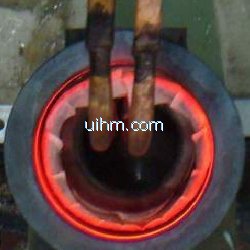
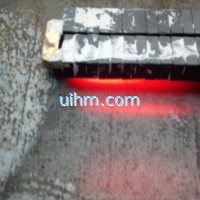
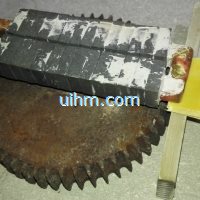
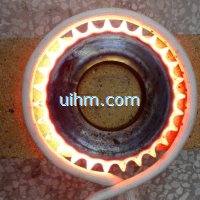
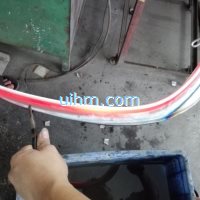

Newest Comment
No Comment
Post Comment